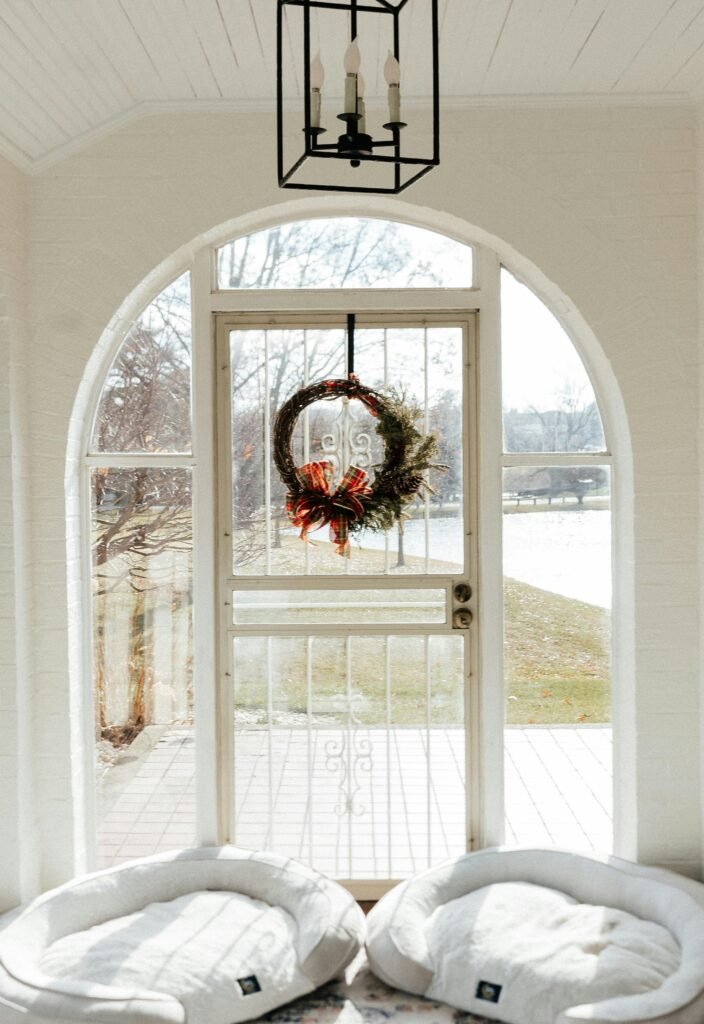Hey there! Are you tired of socks that constantly slip off your feet or squeeze them too tight? Well, fret no more! In this article, we’ll guide you through the world of designer socks and help you find the perfect fit. Whether you’re a fan of funky patterns or classic colors, we’ve got you covered. Say goodbye to uncomfortable socks and hello to the ultimate comfort and style. So, let’s dive right in and discover the secrets to finding the perfect fit for your feet!

This image is property of images.pexels.com.
Common Sock Sizing Systems
When it comes to buying socks, it’s important to understand the various sizing systems used around the world. The most common sizing systems include US, UK, and European sizes. Each system has its own unique measurements, making it essential to know which system you are purchasing socks from.
US Sizing
In the United States, sock sizes are typically labeled with a number ranging from 9 to 15. These numbers correspond to the shoe size range that the socks are designed to fit. For example, if you wear a size 9 shoe, you would typically wear a size 9 sock.
UK Sizing
In the United Kingdom, sock sizes are labeled with a letter that corresponds to a range of shoe sizes. The most common sizes include S (4-6), M (6-9), L (9-11), and XL (11-14). It’s important to note that UK sizing may vary slightly from brand to brand.
European Sizing
European sock sizes are typically labeled with a number that corresponds to the length of the foot in centimeters. This sizing system is used throughout Europe and can be more precise than other systems. For example, a size 39 sock would correspond to a foot length of 39 centimeters.
Determining Your Size
To ensure a proper and comfortable fit, it’s crucial to determine your sock size accurately. There are three key measurements you should consider: foot length, foot width, and arch height.
Foot Length Measurement
To measure your foot length, place a ruler or measuring tape on the ground and stand with your heel against a wall. Measure from the wall to the tip of your longest toe. Record this measurement in centimeters or inches, depending on the sizing system of the socks you’re purchasing.
Foot Width Measurement
To measure your foot width, take a flexible measuring tape and wrap it around the widest part of your foot. This measurement will help you determine if you have narrow, regular, or wide feet, allowing you to choose socks that are better suited to your foot shape.
Arch Height Measurement
Determining your arch height is important for selecting socks that offer appropriate support. To measure your arch height, stand with your weight evenly distributed and measure the distance between the floor and the highest part of your arch. This measurement will help you find socks that provide the right level of compression and support.
Choosing the Right Length
Socks come in different lengths to accommodate various preferences and activities. It’s important to choose the right length to ensure comfort and functionality.
Ankle Length
Ankle-length socks are shorter socks that typically reach just above the ankle bone. They are a popular choice for everyday wear and can be worn with various types of shoes. Ankle-length socks are versatile and provide a casual and comfortable look.
Crew Length
Crew-length socks extend to the middle of the calf, providing additional coverage and warmth. They are a great option for colder weather or for those who prefer more coverage. Crew-length socks are commonly worn with boots or sneakers and are suitable for both casual and athletic activities.
Mid-Calf Length
Mid-calf length socks reach halfway between the ankle and the knee and offer more coverage than ankle or crew length socks. They are often worn with dress shoes or taller boots. Mid-calf length socks provide a polished and professional look and are a popular choice for formal or business attire.
Over-the-Calf Length
Over-the-calf length socks extend all the way up to the knee, providing maximum coverage and support. These socks are generally worn with dress shoes and are ideal for formal occasions. Over-the-calf length socks offer a sleek and stylish look and help keep the legs warm during colder months.
Understanding Stretch and Elasticity
Stretch and elasticity are important factors to consider when choosing socks. Proper fit and a comfortable stretch are crucial for optimal comfort and support.
Elastic Fiber Content
Elastic fibers play a significant role in the stretch and fit of socks. Look for socks that contain a blend of elastane, spandex, or nylon, as these fibers provide excellent stretch and shape retention. Socks with a higher percentage of elastic fibers will generally offer a more secure fit.
Fit Adjustment for Stretch
Some socks may have a specified size range due to their stretchy nature. For example, a sock labeled as “one size fits all” may be made with high-quality stretchy materials that accommodate a range of foot sizes. It’s important to consider the stretch and flexibility of socks to ensure a proper fit.

This image is property of images.pexels.com.
Considering Material and Thickness
The material and thickness of socks play a significant role in their overall comfort, durability, and performance. Here are a few commonly used materials and their characteristics:
Cotton Socks
Cotton socks are soft, breathable, and absorbent, making them a popular choice for everyday wear. They provide comfort and help control moisture, keeping your feet dry throughout the day. Cotton socks are available in various thicknesses to suit different preferences.
Wool Socks
Wool socks are known for their excellent insulation properties, keeping your feet warm in cold weather. They are naturally moisture-wicking and help regulate temperature, making them great for outdoor activities. Wool socks are available in different thicknesses, and merino wool is particularly renowned for its softness and breathability.
Silk Socks
Silk socks are exceptionally lightweight and offer a luxurious feel against the skin. They provide excellent moisture-wicking properties and offer a sleek and elegant look. Silk socks are great for dressier occasions, but they may not provide as much cushioning or durability as other materials.
Nylon Socks
Nylon socks are durable, lightweight, and offer excellent stretch. They are often blended with other materials for added comfort and stretchiness. Nylon socks are commonly used in athletic or performance socks, as they provide breathability and moisture management.
Accounting for Shrinkage
Some socks may shrink slightly after washing, which can affect their fit. It’s important to consider shrinkage when selecting socks and choose the appropriate size accordingly.
Pre-Shrunk Socks
Some socks are labeled as pre-shrunk, meaning they have undergone a treatment process to minimize shrinkage. If you prefer not to worry about shrinkage, look for socks that are labeled as pre-shrunk.
Shrinkage Prone Materials
Certain materials, such as cotton, are more prone to shrinkage. If you choose socks made from these materials, it’s essential to follow the care instructions carefully to minimize shrinkage.
Shrinkage After Washing
To prevent excessive shrinking, it’s important to wash socks according to the care instructions provided by the manufacturer. Washing socks in cold water and avoiding high heat settings when drying can help reduce shrinkage.

This image is property of images.pexels.com.
Special Considerations for Different Styles
Different sock styles have unique features and considerations. Understanding these variations can help you choose the right socks for specific activities or occasions.
Dress Socks
Dress socks are designed to complement formal or business attire. They often feature finer materials and come in various lengths, from ankle to over-the-calf. Dress socks should be thin enough to fit comfortably in dress shoes and provide a polished and sophisticated appearance.
Athletic Socks
Athletic socks are designed for sports and physical activities. They typically feature cushioning, moisture-wicking properties, and arch support to enhance performance and prevent discomfort. Athletic socks come in various lengths and thicknesses, depending on the type of activity.
Casual Socks
Casual socks are versatile and can be worn for everyday activities. They come in various colors, patterns, and thicknesses to match your personal style. Casual socks tend to offer more cushioning and insulation compared to dress socks, providing comfort and warmth throughout the day.
Compression Socks
Compression socks are designed to improve blood circulation and reduce swelling in the legs and feet. They provide graduated pressure, which is tighter at the ankle and gradually decreases towards the calf. Compression socks are commonly used during long flights, intense workouts, or for medical purposes.
Testing the Fit
Once you have found socks that match your desired style and material, it’s important to test the fit before making a purchase. Here are a few tests you can perform to ensure the socks fit comfortably:
Toe Wiggle Test
Stand up and wiggle your toes inside the socks. Ideally, your toes should have enough room to move comfortably without feeling constrained. If they feel cramped or restricted, you may need to try a larger size.
Heel Slippage Test
Put on the socks and walk around for a few minutes. Pay attention to whether the heels of the socks stay in place or slide down. If the socks continuously slip down, they may be too big or have a poor fit.
Cuff Tightness Test
Check the cuff of the socks to ensure it is not too tight or too loose. The cuff should stay securely in place without constricting your calves or leaving marks on your skin. If the cuff feels overly tight or leaves indentations, you may need to try a different size.
Importance of Trying Before Buying
While online shopping offers convenience, trying socks on before buying can help ensure a proper fit. However, there are some steps you can take to make more informed online purchases.
In-Store Try-Ons
Visit a store that carries a variety of sock brands and styles and try them on before making a purchase. This will allow you to feel the comfort and stretch of the socks firsthand and select the best size.
Online Size Charts and Reviews
When shopping online, refer to the brand’s size chart to determine the best size based on your measurements. Additionally, read customer reviews to gain insights into how the socks fit and whether they run true to size.
Tips for Finding the Perfect Fit
Finding the perfect fit can be a trial-and-error process, but these tips can help you narrow down your options and improve your chances of finding socks that fit well.
Know Your Measurements
Take accurate measurements of your foot length, width, and arch height to determine your sock size. Knowing your measurements will help you select the appropriate size based on the sizing system used by the brand.
Consider Brand-specific Sizing
Different brands may have slight variations in their sizing, so it’s important to consider brand-specific measurements and recommendations. Some brands may offer size guides on their websites or provide sizing information based on customer feedback.
Pay Attention to Customer Feedback
Reading customer reviews can provide valuable insights into how certain socks fit and whether they run true to size. Pay attention to comments mentioning fit issues or recommendations for sizing up or down.
Seek Professional Fitting Advice
If you’re unsure about your sock size or have unique foot characteristics, consider seeking professional fitting advice. Some specialty stores or footwear specialists offer professional fitting services to help you find the perfect fit.
By considering the sizing systems, length, stretch, materials, and special considerations, you can find the perfect pair of socks that fit well and provide optimal comfort and support. Remember to measure your feet accurately, test the fit, and take advantage of resources such as size charts and customer feedback to make informed purchasing decisions. Whether you’re buying dress socks, athletic socks, or casual socks, a proper fit will enhance your overall comfort and satisfaction.
